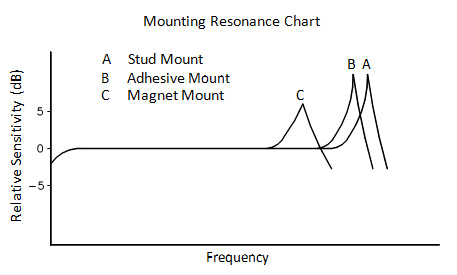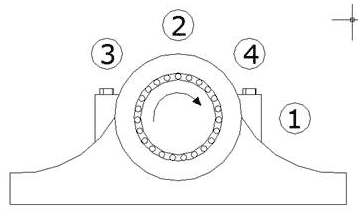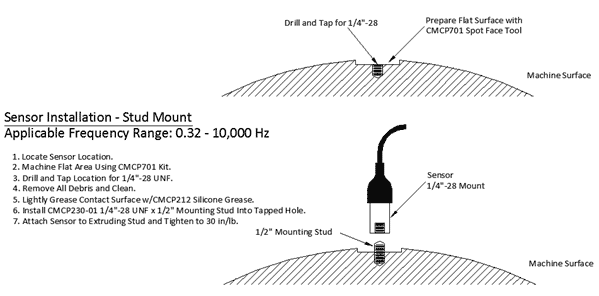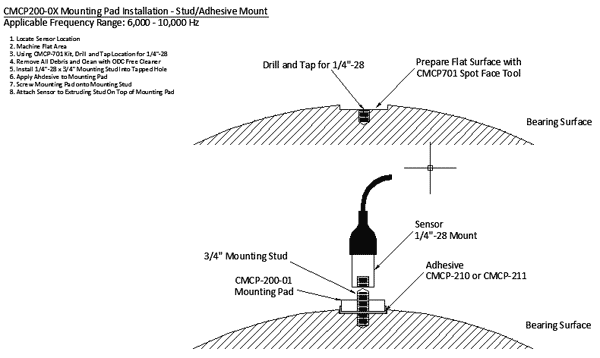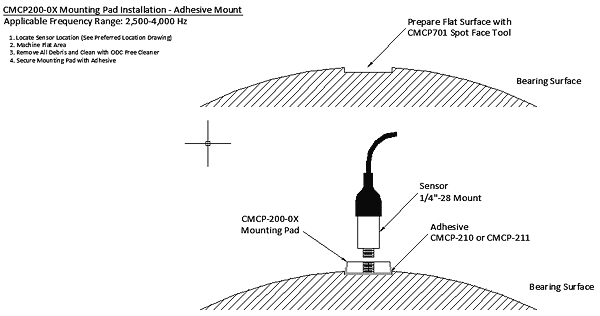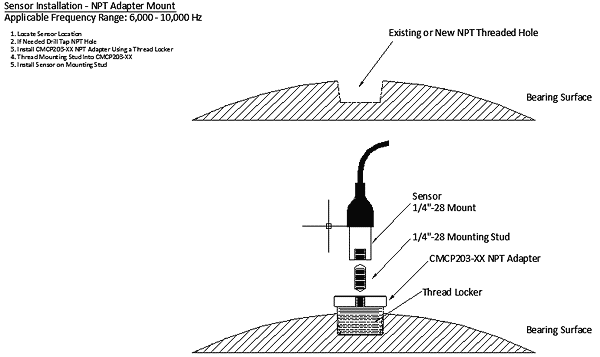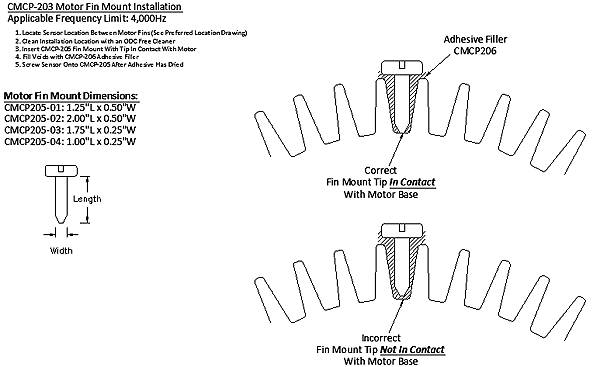Section IV: Cabling:
The instrument wire from the vibration sensor to its transmitter or monitor should be either a twisted pair or triad cable depending on the sensors requirement. These cables should be stranded, twisted, individually insulated, shielded and with an overall jacket. The shields or drain wires must be insulated or isolated from each other and the conduit. The use of multi‐conductor cable with a single shield is not suggested due to its susceptibility to induced noise and line interference.
The gauge or thickness of the instrument wire is determined by the distance between the sensor and the transmitter or monitor. Long lengths of cable will deteriorate the signal; this can be a problem when monitoring gear mesh frequencies, blade pass frequencies or rolling element bearing frequencies.
Signal Interference Sources:
Noise or Line Interference can be induced in a Vibration Monitoring System in a number of ways. However, there must first exist a source for the induced noise. There are numerous noise sources available in an industrial or power generation plant:
AC Power Transients
AC Power Transients
Ground Differentials
Switching Circuits
High Voltage Circuits
Improper Load Balance
Noise can be induced in a Vibration Monitoring System through Electrostatic (Capacitive), Electromagnetic (Inductive) or Conductive Coupling (Direct Connection). All noise will be induced in the monitoring system through one or more of its external connections or Field Wiring.
It is critical that conduit be utilized with the sensor cabling and its associated wiring. The use of conduit greatly reduces the possibility of induced noise or line interference on the signals path. The conduit system shall be dedicated to the monitoring system and no other wiring should be in the same conduit. Also, cable trays, wire ways, or instrument trays are an unacceptable alternative to dedicated conduit. Route the conduit as far as
possible from any power cables, relay contact cables and motor control cables. If you must cross these cables do so at a 90° angle.
The following table offers a guideline to determine the maximum cable length for different types of sensors. This is based on an ideal installation where the cable is properly grounded and installed in a dedicated conduit system.
Sensor Sensitivity |
Maximum Cable Length |
100mV/g |
100‐150 |
500mV/g |
150‐500 |
4‐20mA Velocity Sensors |
>1000 |
Sensor Wiring:
A Single Point Grounding scheme must be utilized when installing a vibration monitoring system. All grounds must be connected at one location. It is recommended that the grounding point be at the transmitter/monitor end and not at the machine. On most machines or where other machines are being monitored significant ground differentials can be found between sensor locations and machines.
All Instrument Wire shields must be grounded at one end of the cable, and the other end left floating or not connected. The Instrument Wire should be grounded at the Vibration Monitoring System. If the shield is not grounded, the shield will become an antenna increasing induced noise on the signal path. If the shield is grounded at both ends, it will allow ground current (ground loop noise) to flow through the shield, seriously increasing signal noise.
Sensors with Built In Cables:
Cable Part Number |
Description |
Color Code |
CMCP1100‐XX
CMCP1100S-XX |
Low Cost Accelerometer with Integral Cable |
Red (+)
Black (‐) Shield/Drain |
CMCP1100HT‐XX |
High Temperature Low Cost Accelerometer with Integral Cable |
White (+)
Black (‐) Shield/Drain |
Extension Cables:
Cable Part Number |
Description |
Color Code |
CMCP602L‐XX‐XX |
Accelerometer Extension Cable
2 Pin, Standard Cable |
Red (A)
Black (B) Shield/Drain |
CMCP602H‐XX‐XX |
Accelerometer Extension Cable
2 Pin, High Temperature Cable |
White (A)
Black (B) Shield/Drain |
CMCP603L‐XX‐XX
CMCP603H-XX-XX |
Accelerometer Extension Cable
3 Pin. |
Red (A)
Black (B) White(C) Shield/Drain |
|

